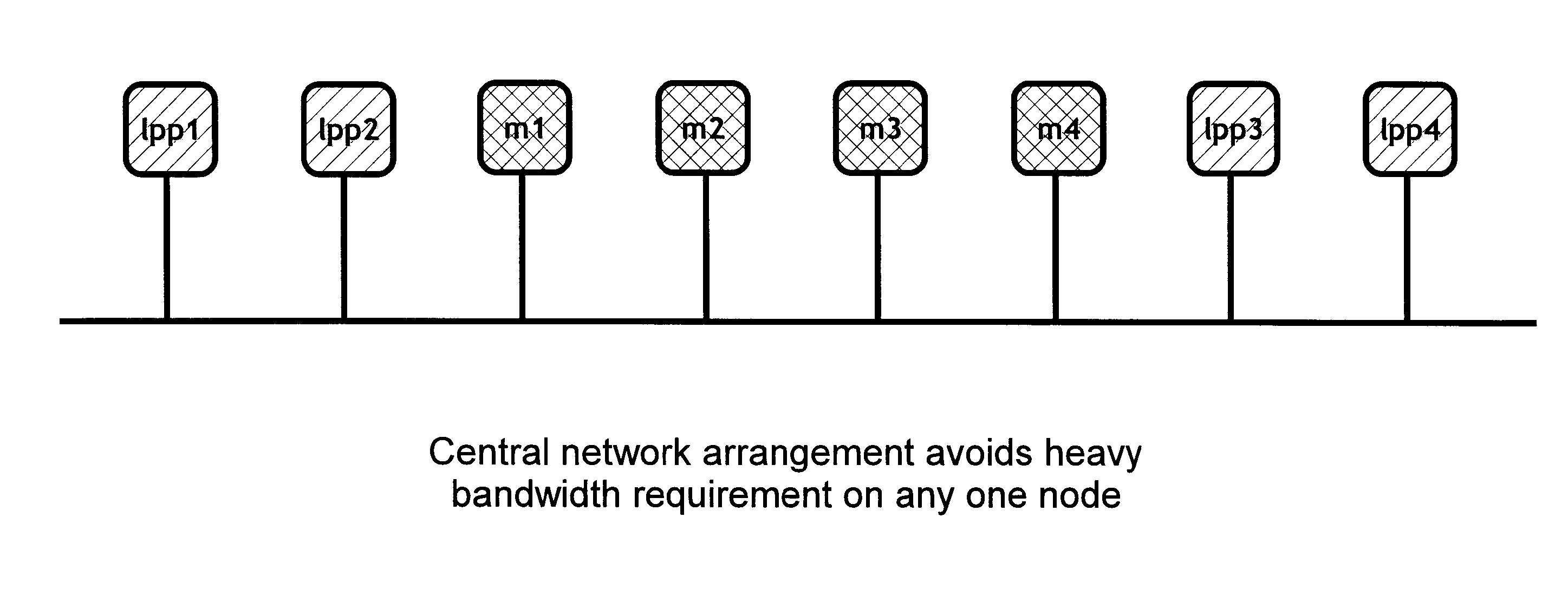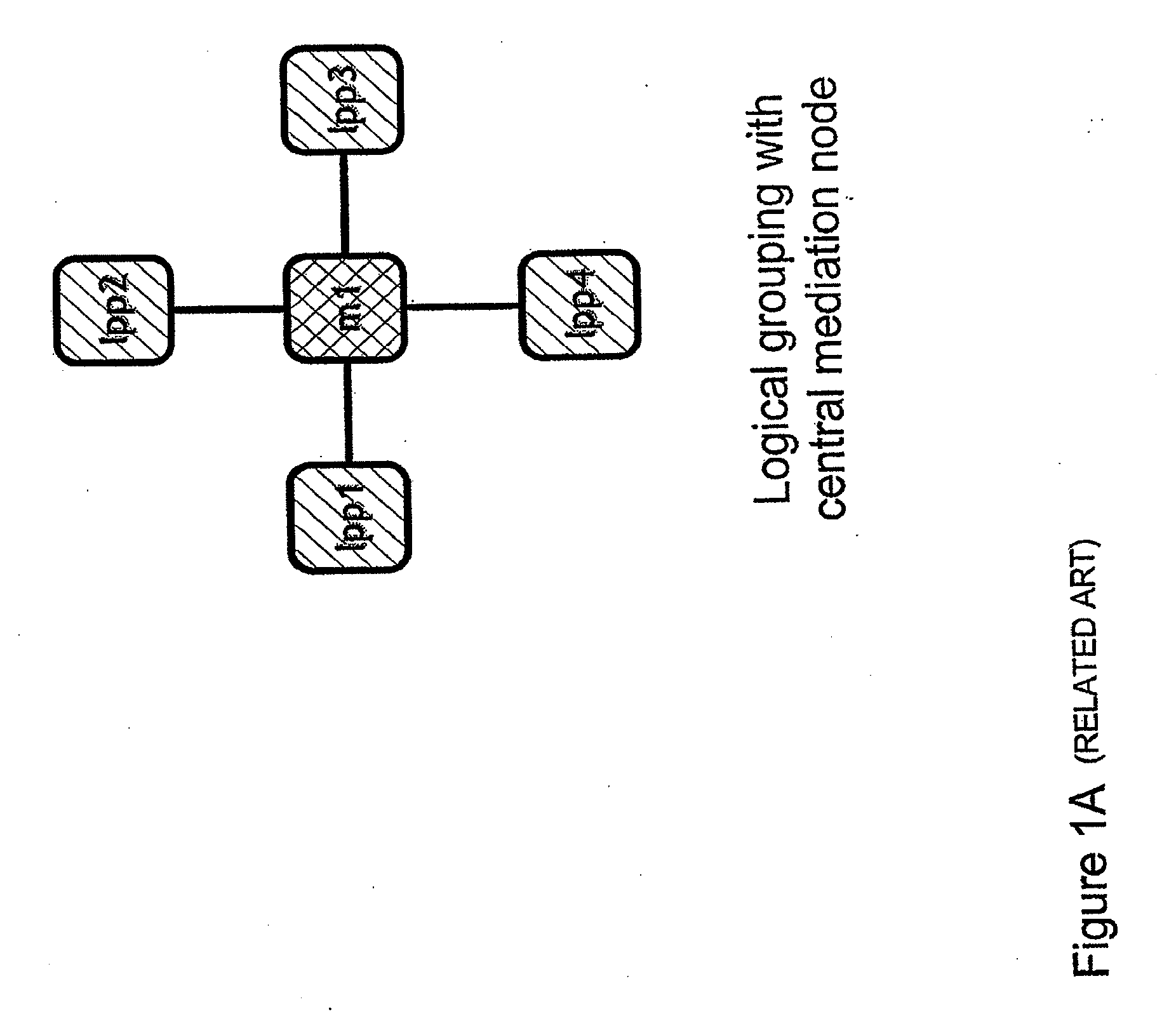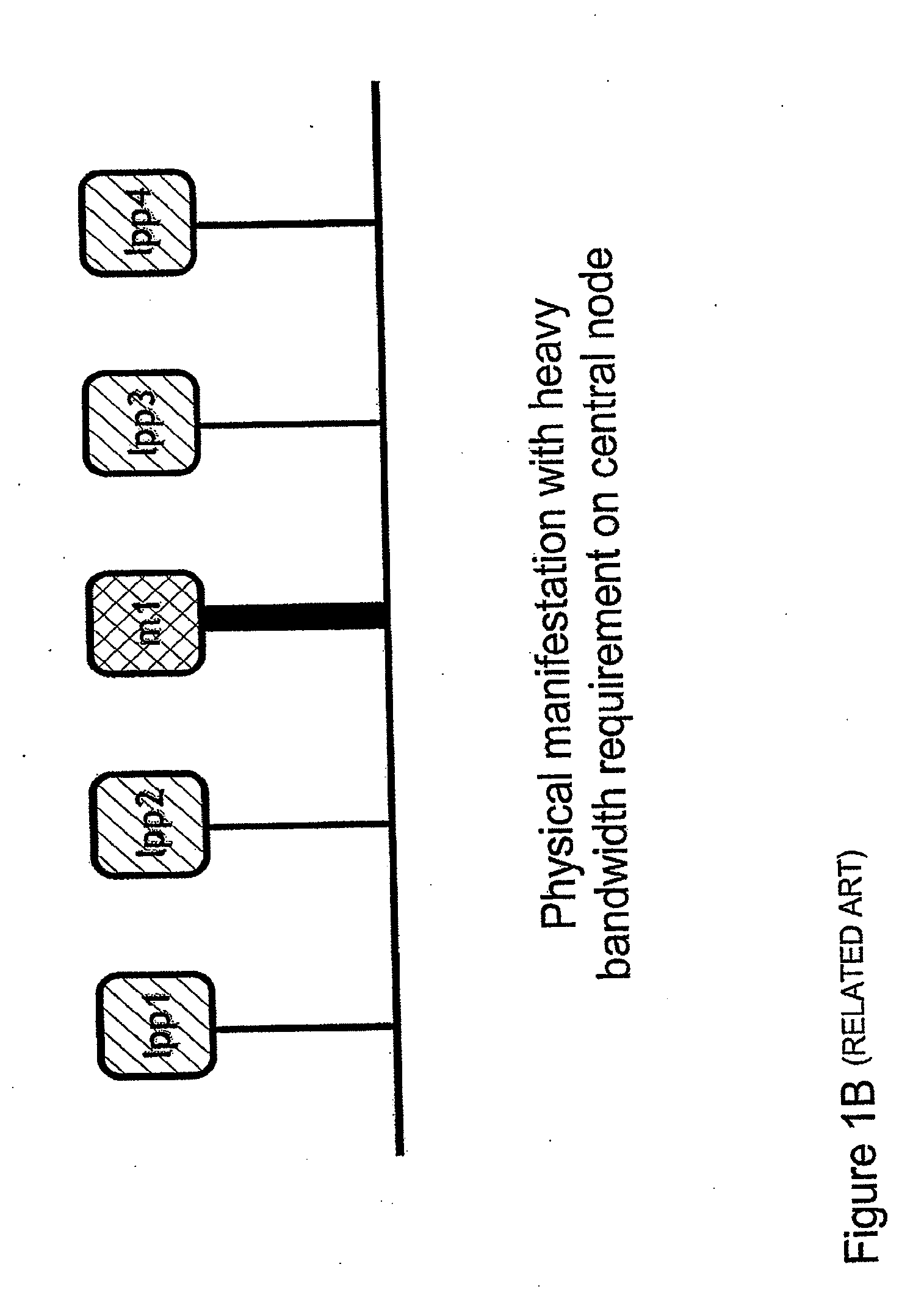Self-managed distributed mediation networks
a distributed mediation and self-managed technology, applied in the field of self-managed distributed mediation networks, can solve the problems of inherent throughput bottleneck, real limitation of the overall system throughput, and prone to suffer from lack of bandwidth, so as to optimise the use of available resources, spread computational load, and sufficient system capacity
- Summary
- Abstract
- Description
- Claims
- Application Information
AI Technical Summary
Benefits of technology
Problems solved by technology
Method used
Image
Examples
Embodiment Construction
[0067]The P2P and centrally mediated messaging models that provide the background to the present invention are first explained. Throughout this discussion, the term source designates a client that generates new messages to send into a network service and the term sink designates a client that receives messages from a network service. Each client of a network service may be a source, a sink, or both. In an alternative terminology, sources of information are referred to as publishers and sinks for information are referred to as subscribers.
[0068]In peer-to-peer content-based routing, a network is configured to allow the efficient transmission of messages from source to sink, based upon the establishment of virtual channels between the appropriate sources and sinks. Efficiency is typically achieved by the detection and removal of unnecessary edges (lines of communication connecting nodes) from a fully connected graph, with the resulting optimised graph then tailored to available networ...
PUM
 Login to View More
Login to View More Abstract
Description
Claims
Application Information
 Login to View More
Login to View More - R&D
- Intellectual Property
- Life Sciences
- Materials
- Tech Scout
- Unparalleled Data Quality
- Higher Quality Content
- 60% Fewer Hallucinations
Browse by: Latest US Patents, China's latest patents, Technical Efficacy Thesaurus, Application Domain, Technology Topic, Popular Technical Reports.
© 2025 PatSnap. All rights reserved.Legal|Privacy policy|Modern Slavery Act Transparency Statement|Sitemap|About US| Contact US: help@patsnap.com



